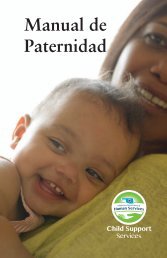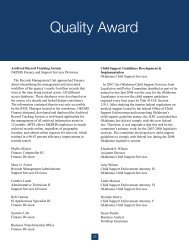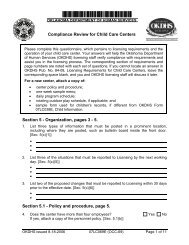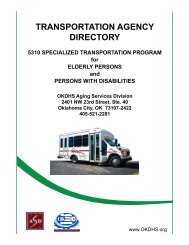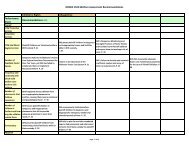The Oklahoma Pinnacle Plan - Oklahoma Department of Human ...
The Oklahoma Pinnacle Plan - Oklahoma Department of Human ...
The Oklahoma Pinnacle Plan - Oklahoma Department of Human ...
Create successful ePaper yourself
Turn your PDF publications into a flip-book with our unique Google optimized e-Paper software.
<strong>The</strong> <strong>Oklahoma</strong> <strong>Pinnacle</strong> <strong>Plan</strong>:<br />
An Improvement <strong>Plan</strong> for Child Welfare Services<br />
March 2012<br />
***<strong>The</strong> average <strong>of</strong> OCA Totals for CY 2009 and 2010 was used to recalculate the Safety in Out-<strong>of</strong>-Home Care<br />
rate. In other words, the calculation was based on the assumption that there would have been an estimated 117<br />
victims in each year, for FFY’s 2008, 2009, and 2010.<br />
Another method for ensuring safety <strong>of</strong> children is to visit them regularly and ensure an open<br />
line <strong>of</strong> communication is established with children. Although OKDHS has a strong history <strong>of</strong><br />
visiting children in their placements, improvements can be made in the quality <strong>of</strong> visits and<br />
continuity <strong>of</strong> the same CWS visiting the child.<br />
Some Native American children, found to be abused or neglected, are served by tribal child<br />
welfare programs in <strong>Oklahoma</strong>. In order to ensure these children are safe, tribes have<br />
requested access to child welfare history maintained by OKDHS in order to ensure placements<br />
are safe. OKDHS will request statutory language to allow child welfare history to be made<br />
available to any federally recognized tribe seeking to approve individuals as placement<br />
resources or appointed as legal guardians.<br />
INITIATIVES FOR PINNACLE POINT 6:<br />
Year One (SFY 2013)<br />
1. OKDHS will implement changes in the investigative process that ensures the safety <strong>of</strong><br />
children in out-<strong>of</strong>-home care to ensure consistency in screening, prioritizing,<br />
investigating, and reporting findings to the federal government regardless <strong>of</strong> the level<br />
<strong>of</strong> care.<br />
a. Centralize the screening process at the Hotline. All referrals are screened the<br />
same day they are received.<br />
b. Conduct all alleged victims’ interviews in accordance with CPS policy regardless<br />
<strong>of</strong> level <strong>of</strong> care. Alleged victims’ interviews are attempted the same day as the<br />
report.<br />
c. Clarify the child’s assigned worker is monitoring the child’s safety for all levels <strong>of</strong><br />
care and ensure they receive information about the final report/finding. Add<br />
guidance to Instructions to Staff (ITS).<br />
d. Request rule changes to OCA policy to conform to CPS substantiation protocols<br />
for children in OKDHS custody. <strong>The</strong> burden <strong>of</strong> pro<strong>of</strong> is some credible evidence.<br />
e. Complete all investigations in accordance to CPS policy timeframes, which is 30<br />
days from the date <strong>of</strong> the referral for all out-<strong>of</strong>-home investigations.<br />
f. Until such time the data is entered into the KIDS system, manually track the<br />
data for reporting purposes.<br />
2. By June 30, 2013, revise the PP policy to include more clear guidelines regarding the<br />
visitation schedule. Policy will require the CWS to visit children more <strong>of</strong>ten during the<br />
first two months and when the child is placed in contiguous counties. This will require<br />
changes to OKDHS rule and ITS. Implementation will need to be phased in with specific<br />
27




